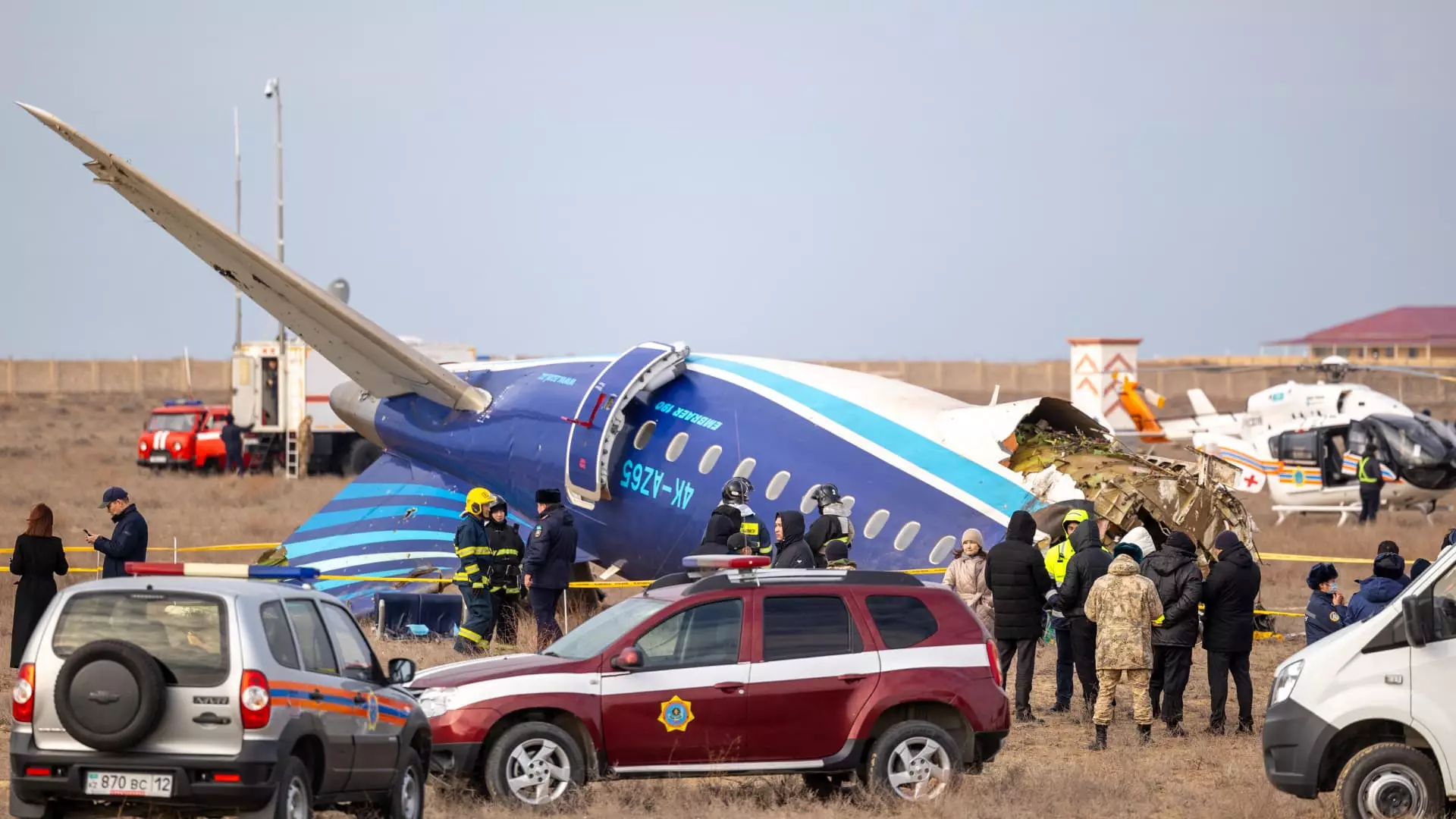In a tragic aviation disaster, an Embraer passenger jet operated by Azerbaijan Airlines crashed near Aktau, Kazakhstan, while en route from Baku, Azerbaijan, to Grozny, a city in the Chechen Republic of Russia. The incident occurred on a Wednesday, involving 62 passengers and an additional five crew members on board. Following the catastrophic event, local authorities reported 32 survivors, revealing a scenario filled with turmoil and uncertainty against the backdrop of international air travel complexities and geopolitical tensions.
The troubled flight, designated as J2-8243, deviated significantly from its originally planned route, ultimately crossing the Caspian Sea—an unexpected maneuver that raises crucial questions regarding the flight’s operational protocol. According to Russian aviation officials, the cause of the emergency appears to have been a bird strike, leading to an urgent need for an alternate landing site; Aktau was selected for this unscheduled landing. This decision begs an analysis of the flight’s trajectory deviations and why it veered off course so dramatically, possibly influenced by immediate aviation threats such as drone strikes reported in southern Russia at the time.
The harrowing visuals captured during the incident shed light on the chaotic descent of the aircraft and the immediate aftermath. Footage depicted the plane in an uncontrollable descent before it ignited upon impact, sending thick plumes of dark smoke into the sky. Survivors, shaken and visibly injured, were seen emerging from partially intact sections of the fuselage, which speaks to both the instinct for survival and the devastating reality of modern air travel. This imagery surfaces pivotal discussions about aircraft safety features, emergency evacuations, and the human capacity to endure life-threatening situations.
In the wake of the crash, Kazakhstan’s emergency services responded with commendable speed, extinguishing the resulting fire and providing medical assistance to survivors, including children. The coordinated rescue operation highlighted a commitment to ensuring the well-being of those affected despite the horrifying circumstances. Furthermore, the Kazakh government has committed to investigating the incident thoroughly, collaborating with Azerbaijani officials to ascertain the exact causes of the crash and to support the families of the deceased while managing the ramifications of this tragic event.
This airplane tragedy unfolded against a backdrop of heightened tensions in the region, given recent reports of drone strikes on Russian territory. This piece of information creates a narrative of anxiety surrounding air safety in an area rife with military activity and geopolitical disputes. The closure of airports nearby underscored the precarious nature of civilian operations in the vicinity of ongoing military tensions, leading to questions about whether this crash was simply an unfortunate accident or part of a larger mosaic of conflict-driven stressors affecting air travel.
The crash prompted swift responses from high-ranking officials, including expressions of condolence from Russian President Vladimir Putin and Azerbaijani President Ilham Aliyev. These messages do more than address the tragedy; they also serve to illustrate the human aspect of leadership amid disaster, as their respective nations navigate the diplomatic implications of the event. Ramzan Kadyrov, the leader of Chechnya, revealed the serious injuries of some survivors, further emphasizing the immediacy of care and community solidarity in difficult times.
In reflecting upon this tragic event, it is crucial to consider the complexities surrounding aviation safety, geopolitical dynamics, and emergency response efforts. The Embraer jet crash highlights not just the fragility of human life within the expansive web of air travel but also the intertwining of international relationships and the inherent risks faced by passengers and crew alike. As investigations unfold and responses solidify, the stories emerging from this calamity will be pivotal in shaping future regulatory frameworks and enhancing global aviation safety standards, all while honoring the lives affected by this heartbreaking incident.

